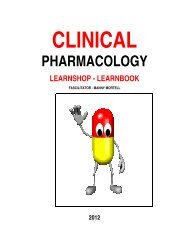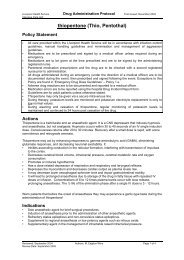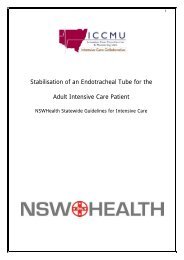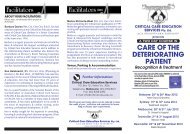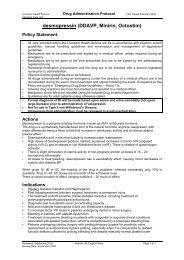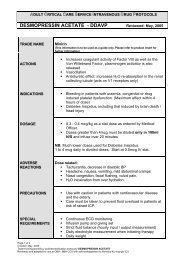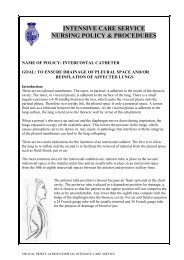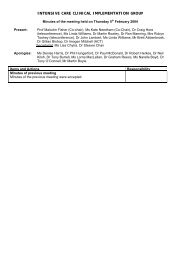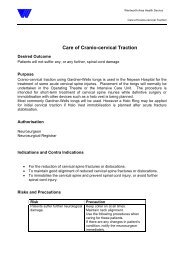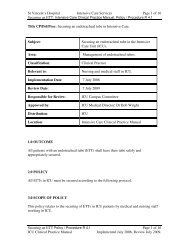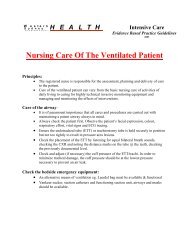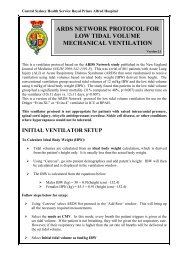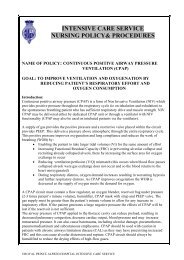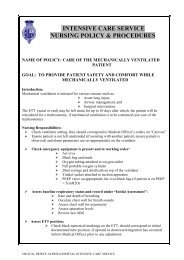A quick reference guide to haemofiltration and renal failure March ...
A quick reference guide to haemofiltration and renal failure March ...
A quick reference guide to haemofiltration and renal failure March ...
You also want an ePaper? Increase the reach of your titles
YUMPU automatically turns print PDFs into web optimized ePapers that Google loves.
MOST COMMONLY USED ANTICOAGULANT THERAPIES<br />
* HEPARIN * CITRATE * REGIONAL HEPARINIZATION<br />
* SALINE FLUSHES * NO ANTICOAGULATION<br />
HEPARIN<br />
• Heparin acts by binding <strong>to</strong> <strong>and</strong> greatly enhancing the<br />
activity of antithrombin III, <strong>and</strong> from inhibition of a<br />
number of coagulation fac<strong>to</strong>rs – particularly activated<br />
fac<strong>to</strong>r X. (Dorl<strong>and</strong> 2003:836).<br />
• Heparin is the most commonly used anticoagulant.<br />
• The extracorporeal circuit is primed with heparinized saline.<br />
Depending upon the patients own coagulation, an infusion of<br />
heparin is delivered in<strong>to</strong> the circuit prior <strong>to</strong> the<br />
haemofilter.<br />
• Patient coagulation levels should be taken prior <strong>to</strong> the<br />
commencement of CRRT. At 2 hours post commencement<br />
draw blood from the blue (venous) port <strong>and</strong> check machine<br />
APTT. This needs <strong>to</strong> be repeated every 2hours until the<br />
machine APTT lies between 60 – 80 seconds. Once stable<br />
check 6 th hourly. Blood needs <strong>to</strong> be taken from both the<br />
patient <strong>and</strong> the machine for comparison. Once coagulation is<br />
stable within the set limits, bloods are attended 12 hourly.<br />
25



